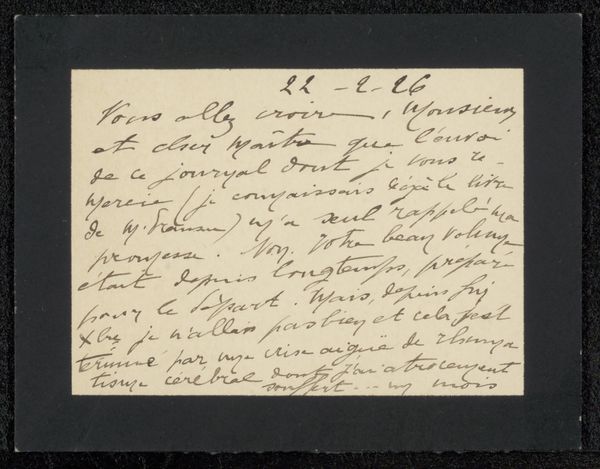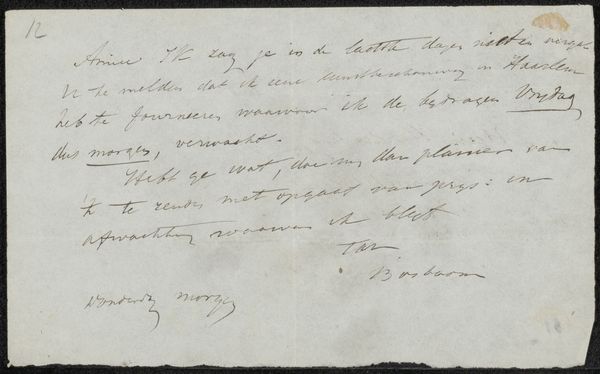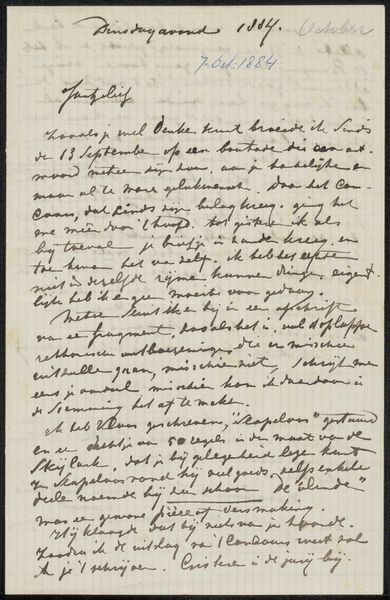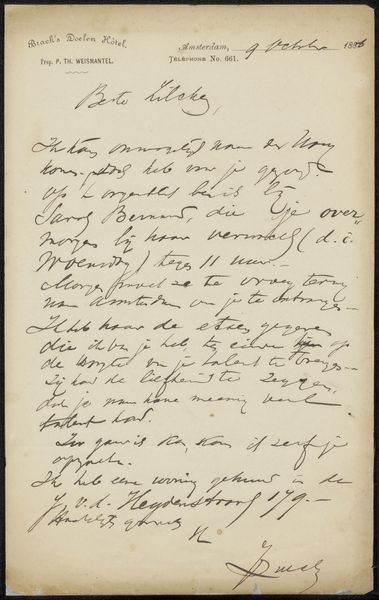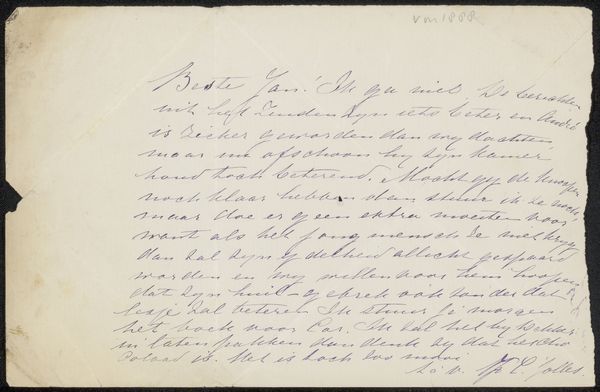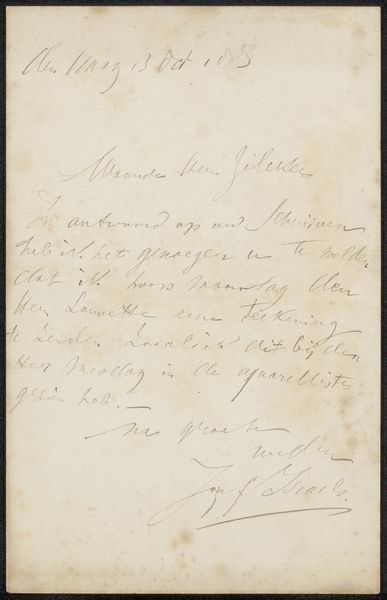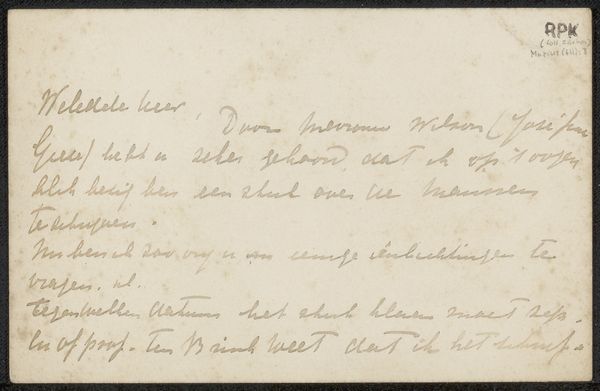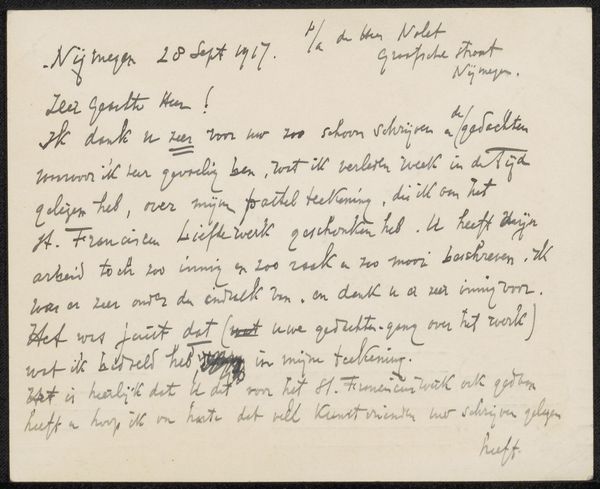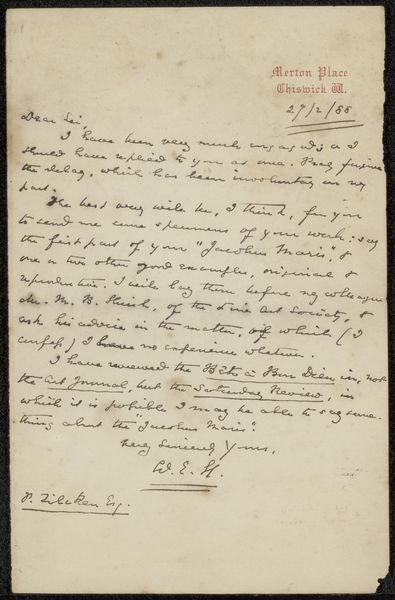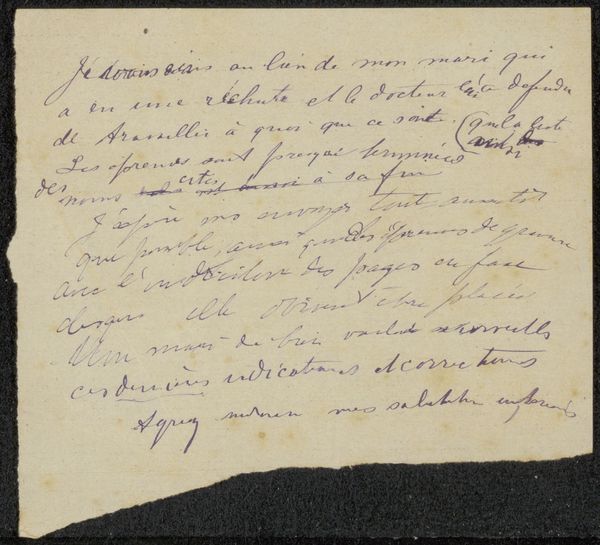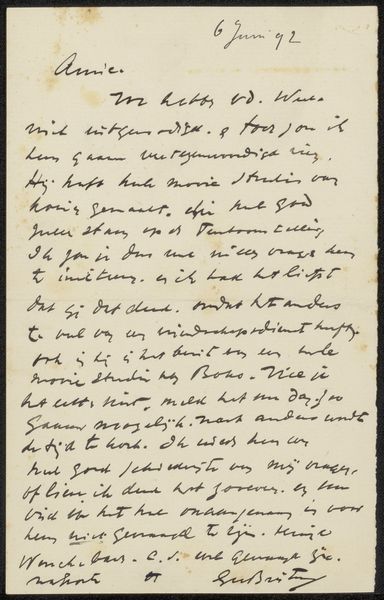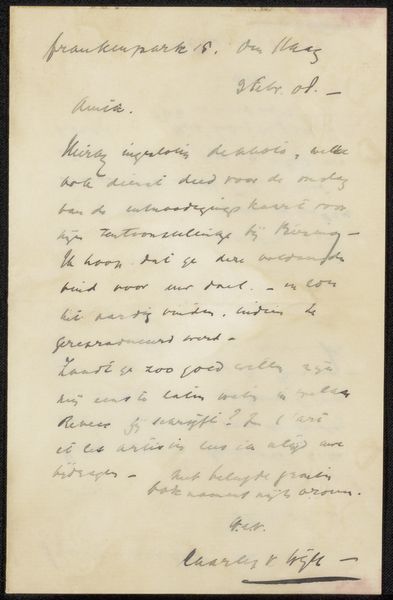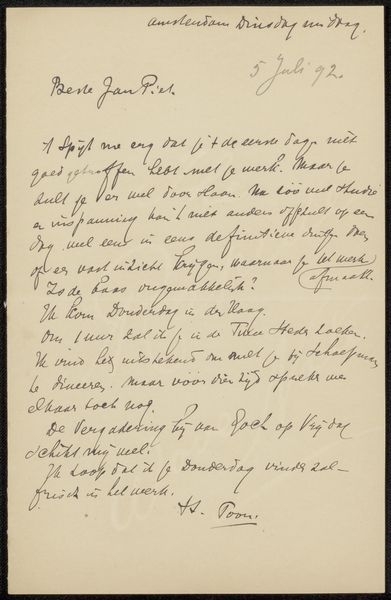
Dimensions: height 70 mm, width 140 mm
Copyright: Rijks Museum: Open Domain
Curator: Looking at this small ink drawing on paper titled "Vierregelig vers" or "Four-line Verse" made between 1840 and 1880 and currently housed in the Rijksmuseum, I am struck by the immediacy of its creation. There is a certain intimacy imbued by its modest scale and the flow of its handwritten script. Editor: The overall feeling to me is one of fragility, a momentary reflection captured on a fleeting scrap. The brown ink, the somewhat transparent paper. What’s particularly interesting to me, considering its era, is how personal and diaristic it feels. Curator: You are right. Although we can classify this under Romanticism for its landscape and emotive qualities, it also demonstrates a strong interest in text. The use of calligraphy transforms the poem itself into an art object. Do you feel that this drawing is purely literary or something more than a text-based work of art? Editor: For me, the text becomes inseparable from the visual representation; it’s the aesthetic presentation that draws me in. The subject could be anything really, but the care put into its physical realization feels key. This period marks, as you say, the Romantic era when artists felt able to represent nature as sublime. How does that connect, for you? Curator: Thinking intersectionally about identity here and gender I cannot help but wonder if there might also be an artist at play behind the words, reflecting on selfhood as much as landscape. Considering women were generally excluded from official art structures, might such creative activity represent something very pertinent about the nature of gender in artistic creativity at that time? It certainly raises many interesting questions. Editor: It highlights a critical link between the social context of artistic production and its eventual perception and interpretation. It enriches how we understand not only individual authorship, but how artistic creativity is defined and canonized through a patriarchal cultural and political lens. Curator: The image does challenge what a Romantic artwork looked like, what narratives or histories it contained and whose perspective really mattered. I'm finding it deeply touching that such a simple artwork can stimulate us to think about art and the establishment so acutely. Editor: Me too; it is such a refreshing way of bringing to the fore an important conversation regarding women in art history, by understanding that small scribbled verse within its era of Romanticism, revolution, and a shift towards recognizing the self in nature.
Comments
No comments
Be the first to comment and join the conversation on the ultimate creative platform.

